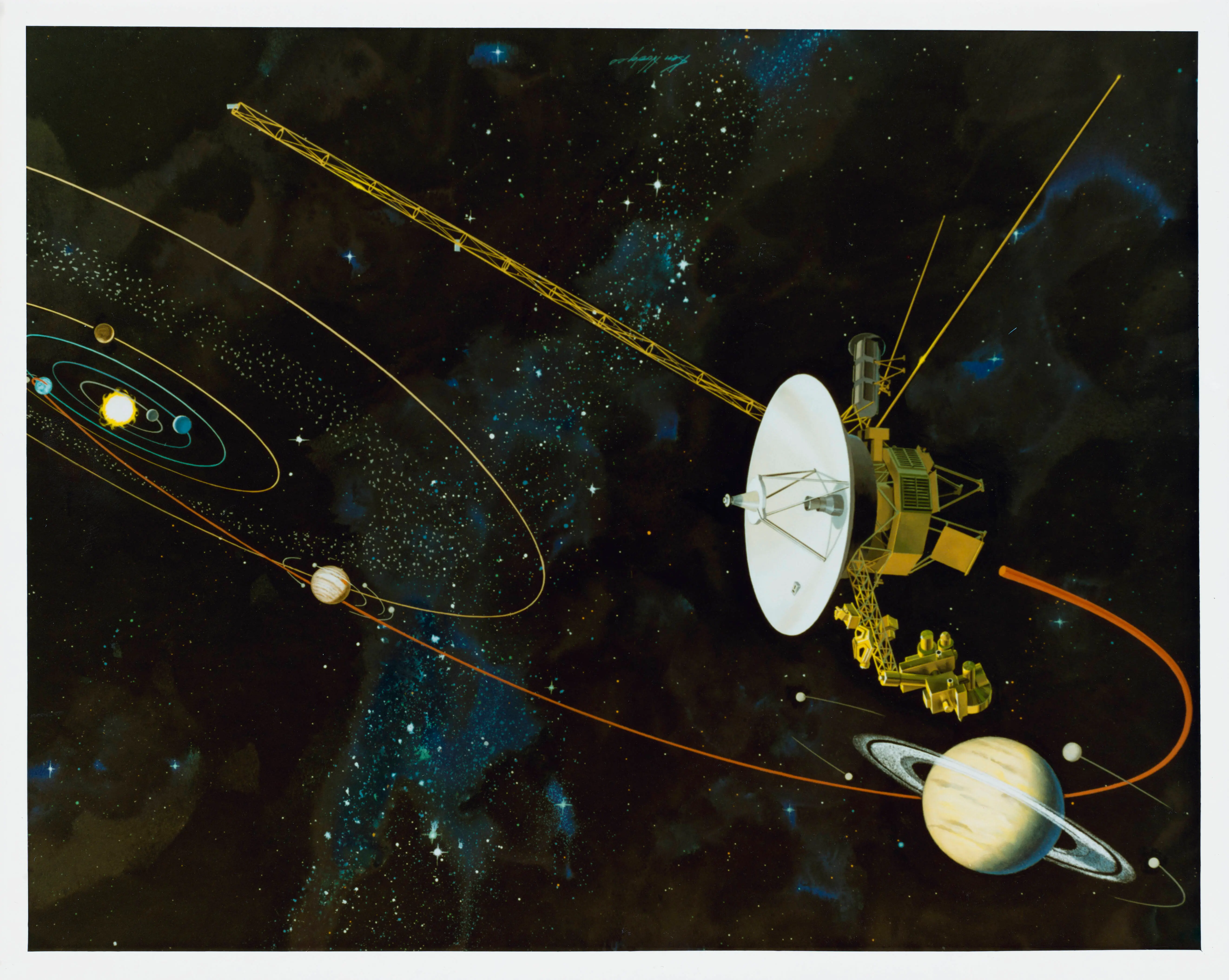3I/Atlas makes history with the highest orbital eccentricity ever recorded: Here’s what it means for science
-
 An artist's impression of the Voyager 1 space probe flying past Saturn in the outer solar system, circa 1980. (Photo by Space Frontiers/Getty Images)
An artist's impression of the Voyager 1 space probe flying past Saturn in the outer solar system, circa 1980. (Photo by Space Frontiers/Getty Images)Astronomers have confirmed that 3I/Atlas, the interstellar object now passing through our solar system, has made history: it has the highest orbital eccentricity ever recorded-meaning, its path through space is more stretched and unusual than anything seen before.
This finding proves that 3I/Atlas is not from our solar system but came from somewhere far beyond, just passing by, on its way back into deep space.
What orbital eccentricity means
In fact, everything that orbits the Sun follows an orbit. Some are round; others are more oval, or even nearly elliptical, in shape. Physicists measure the degree to which an orbit is stretched out by a value called eccentricity.
- A perfect circle has the value of 0.
- A stretched orbit is closer to 1.
- If it's greater than 1, the object isn't trapped by the Sun's gravity - it's on a one-way journey through space.
In fact, particularly for such tests, all the factors affecting educational learning should be taken into consideration. Indeed, Earth's orbit is nearly circular, with an eccentricity of 0.016.
Most comets have eccentricities of about 0.9. But 3I/Atlas has a record-breaking eccentricity of more than 2.5, showing it came from outside our solar system.
A record-breaking space visitor
3I/Atlas was discovered by astronomers using large telescopes like Pan-STARRS and the European Southern Observatory. They noticed that it was going too fast and its path didn't fit anything known.
Its extreme orbit confirmed that it's an interstellar visitor-pulled slightly by the Sun but not captured by it. Put simply, 3I/Atlas entered our solar system from another star system, looped near the Sun, and will soon travel back into space.
Why scientists are excited
3I/Atlas is helping scientists to understand how objects travel between stars. By studying it, they may come to know what kind of materials exists outside our solar system. Telescopes are in close view, studying the object's speed, brightness, and composition.
Early indications are that it might have frozen gas and dust like many comets we know already, but it could tell us new things about how other planetary systems develop because it formed around another star.
What makes it important
This discovery gives scientists a rare chance to study an object that didn’t form around our Sun.
Interstellar visitors like 3I/Atlas carry clues about the early days of the universe. They may be made from material that’s billions of years old. Studying them helps researchers understand how planets, comets, and stars are born across the galaxy.
A rare and record-breaking visitor
Only two other interstellar objects have ever been confirmed — ‘Oumuamua in 2017 and 2I/Borisov in 2019. Now, 3I/Atlas joins them, but with an orbit that’s even more extreme.
Its record-breaking path makes it a unique object in space history. Scientists say studying its movements will help improve how future telescopes and missions track similar visitors.
What’s next
3I/Atlas will soon move too far from Earth to see clearly. But the data gathered so far will help scientists for years to come.
Every time we find an interstellar object, we learn more about the space beyond our solar system. And 3I/Atlas, with its strange and record-breaking orbit, is helping scientists look a little farther into that mystery.
TOPICS: 3I/ATLAS
- Interstellar comet 3I/ATLAS: From 2025 discovery to global sensation – now heading beyond Earth
- Europa Clipper spends seven hours watching 3I/ATLAS as NASA studies elements in its surrounding plume
- Harvard Professor Avi Loeb weighs evidence and interpretation surrounding anomalies in 3I/ATLAS
- Erratic rotation detected as MAVEN Mars probe remains silent